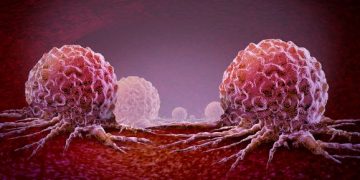Symptoms of rocky mountain spotted fever are nonspecific and include a sudden onset of fever, headache, muscle pain and a rash on the body that may spread to the trunk or other parts of the body. This illness is caused by the bacteria Rickettsia rickettsii and affects the lining of small blood vessels. Eventually, the bacterium can damage cells and tissues throughout your body, leading to a disease called vasculitis.
RMSF is a serious disease that can cause long-term health problems and even death if not treated properly. Treatment is most effective when it begins within five days after a person’s symptoms appear.
The bacterial infection infects the lining of small blood vessels and leads to inflammation and damage of these tiny structures. This is known as vasculitis, which can cause leakage of fluid from the affected blood vessels and excess fluid in the tissues (edema). It can also lead to severe damage to muscles, nerves and organs, such as the heart, lungs and kidneys.
It can also affect the brain and eyes, causing hearing loss and vision problems, and in rare cases, gangrene. This can cause amputations or even death in some people.
Infection usually begins about one week after a tick bite, though it can take longer. The rash appears about 3-5 days after the fever, headache and muscle aches start.

Ticks that carry RMSF are found in the United States and parts of Mexico, Central America and South America. They live on tall grass, in wooded areas and on pets that are allowed outdoors.
Most cases of RMSF occur in the southeastern part of the United States, although it can occur in any region where ticks are active. It’s more common in the summer, when people are outdoors a lot and ticks are more active.
If you have a fever and other symptoms of RMSF, see your provider right away. This will help your doctor decide whether you need to be treated.
Your provider will do a physical exam and ask questions about your symptoms and where you’ve been traveling in the past two weeks. They will also examine your skin to make sure you haven’t been bitten by a tick. If they suspect RMSF, they will do a skin test to see if you have the bacterium that causes the illness.
A blood sample can be taken from the infected area to test for RMSF, but it doesn’t give results fast enough for treatment. This is why your provider might want to have you get a second blood test several weeks later.
This test is used to measure your immune system’s response to the bacterium R. rickettsii that causes the disease. It can tell your provider if you’ve been infected with RMSF and how bad the disease is.
RMSF is often a chronic disease and can be very difficult to treat. The symptoms are usually mild and go away on their own, but if not treated quickly, it can be very serious. It can lead to severe brain damage, seizures and other complications. If you’re a child, it can be especially dangerous. The condition can even be fatal in some children.









